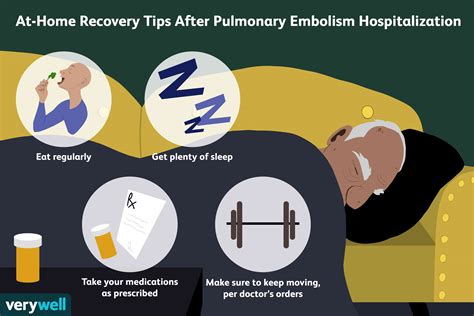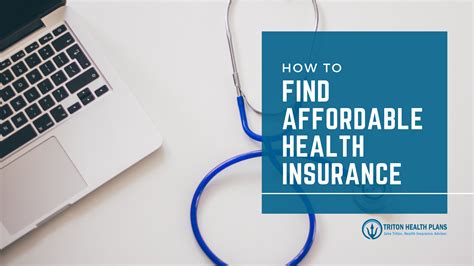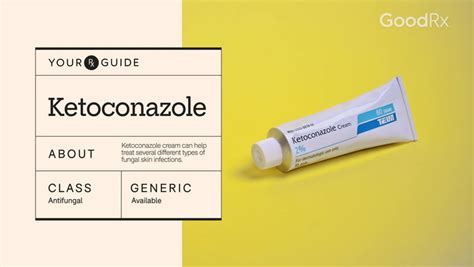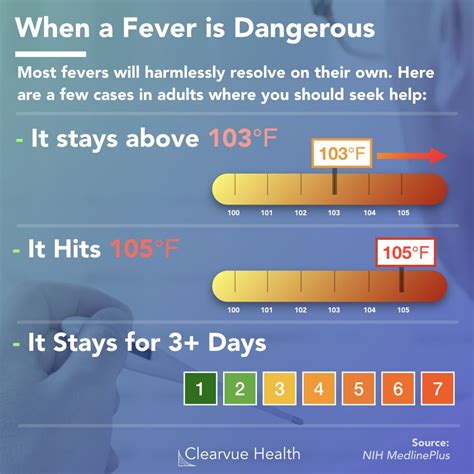Pulmonary embolism (PE) is a life-threatening condition that occurs when one or more arteries in the lungs become blocked by a blood clot. The road to recovery can be long and challenging, but with the right approach, individuals can improve their chances of a faster and more successful recovery. Here are 10 essential tips to help guide the recovery process:
Understanding Pulmonary Embolism
Before diving into recovery strategies, it’s crucial to understand what pulmonary embolism is and how it affects the body. Pulmonary embolism typically starts as a deep vein thrombosis (DVT) in the legs or, less commonly, in the arms, which then breaks loose, travels through the bloodstream, and lodges in one of the pulmonary arteries. This blockage disrupts blood flow to the lungs, leading to symptoms like shortness of breath, chest pain, and in severe cases, collapse or even death.
Tip 1: Follow Your Treatment Plan
Successfully recovering from a pulmonary embolism requires strict adherence to the prescribed treatment plan. This usually involves anticoagulant medications to prevent further clotting, and in some cases, thrombolytic therapy to dissolve the existing clot. It’s essential to understand the medications, their side effects, and the importance of maintaining the prescribed regimen.
Tip 2: Stay Active but Avoid Overexertion
While it might seem counterintuitive, gentle exercise and mobility are crucial for recovery. Movement helps prevent further blood clots from forming and improves circulation. However, it’s vital to avoid overexertion, as this can lead to additional strain on the body and potentially worsen the condition. Consult with your healthcare provider to determine the appropriate level of activity.
Tip 3: Monitor for Signs of Complications
Early detection of complications is key to preventing severe outcomes. Keep an eye out for signs such as increased shortness of breath, chest pain that worsens, coughing up blood, or severe dizziness. If you experience any of these symptoms, seek medical attention immediately.
Tip 4: Maintain a Healthy Lifestyle
Lifestyle changes can significantly impact the recovery process. A healthy diet rich in fruits, vegetables, whole grains, and lean proteins can help reduce inflammation and support overall health. Additionally, quitting smoking and limiting alcohol intake can improve lung function and reduce the risk of further complications.
Tip 5: Stay Hydrated
Adequate hydration is essential for helping your body recover from a pulmonary embolism. Water helps thin out blood and can reduce the risk of further clotting. Aim to drink plenty of water throughout the day, and consider increasing your fluid intake if you’re physically active or live in a hot climate.
Tip 6: Elevate Your Legs
If you’ve had a DVT that led to your PE, your doctor may recommend elevating your legs above the level of your heart to reduce swelling and promote blood flow. This simple technique can help prevent further clot formation and aid in the healing process.
Tip 7: Consider Compression Stockings
Compression stockings can help improve blood flow and reduce the risk of future clots. These stockings are specially designed to apply graduated pressure, with the highest pressure at the ankles and decreasing as they go up the leg. They can be particularly beneficial for individuals at high risk of DVT or those who have had a DVT in the past.
Tip 8: Manage Stress
High stress levels can have a negative impact on recovery, potentially leading to increased blood pressure and heart rate, which can strain the cardiovascular system. Engage in stress-reducing activities such as meditation, deep breathing exercises, or yoga to help manage stress and promote overall well-being.
Tip 9: Join a Support Group
Recovering from a pulmonary embolism can be a isolating experience. Joining a support group, either in-person or online, can provide a sense of community and connection with others who are going through similar experiences. Sharing stories and advice can offer valuable insights and emotional support during the recovery journey.
Tip 10: Schedule Follow-Up Appointments
Regular follow-up appointments with your healthcare provider are crucial for monitoring your recovery progress and adjusting your treatment plan as needed. These appointments can help identify any potential issues early on and ensure that you’re on the right track to a full recovery.
FAQs
What are the first signs of a pulmonary embolism?
+The first signs of a pulmonary embolism can include sudden and unexplained shortness of breath, chest pain that may feel like a sharp stabbing sensation and can worsen with deep breathing, rapid heart rate, and coughing up blood. If you or someone you know is experiencing these symptoms, it's crucial to seek immediate medical attention.
How long does it take to recover from a pulmonary embolism?
+Recovery time from a pulmonary embolism can vary significantly from person to person. It depends on the severity of the condition, the effectiveness of the treatment, and the individual's overall health. Some people may start feeling better within a few weeks, while others may take several months to fully recover.
Can pulmonary embolism be prevented?
+While not all cases of pulmonary embolism can be prevented, there are steps you can take to reduce your risk. These include staying physically active, maintaining a healthy weight, avoiding smoking, managing chronic conditions like high blood pressure and diabetes, and considering anticoagulant medication if you're at high risk.
Conclusion
Recovering from a pulmonary embolism requires patience, persistence, and a comprehensive approach that addresses both physical and emotional health. By following these 10 essential tips, individuals can better navigate the recovery process, reduce the risk of complications, and improve their overall quality of life. Remember, each person’s journey with pulmonary embolism is unique, and what works for one individual may not work for another. Always consult with your healthcare provider to develop a personalized recovery plan that meets your specific needs and health status.



